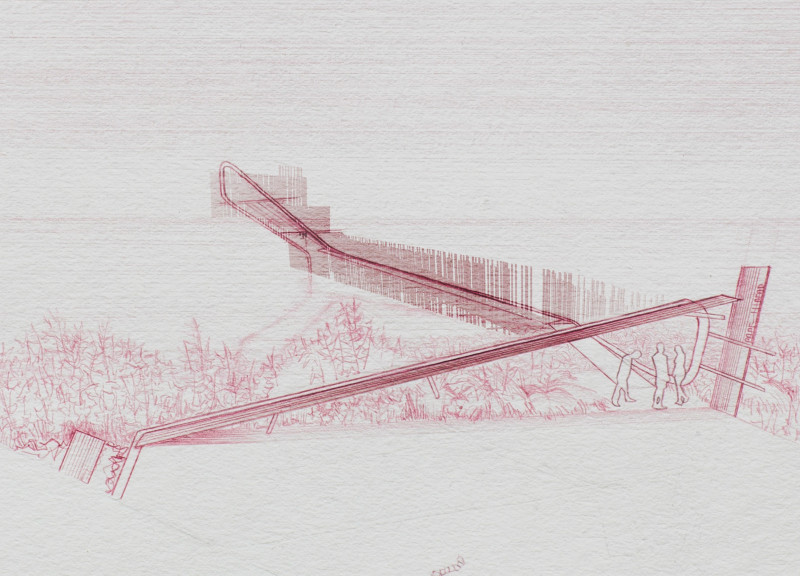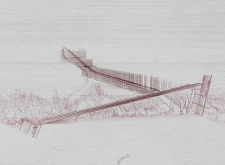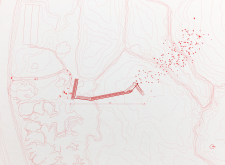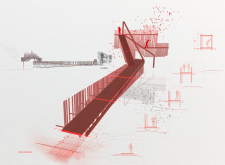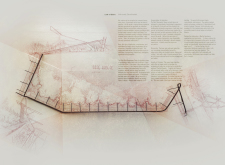5 key facts about this project
## Overview
The Pope Bird Observation Tower is designed to enhance the viewing experience of avian habitats in Latvia's natural landscape. Located strategically to respect the ecological significance of the site, the project serves both as an observation platform and an artistic installation. Its design is rooted in the intent to foster a stronger connection between visitors and the environment, emphasizing ecological sensitivity and conservation.
### Design Strategy
The architectural concept emphasizes the relationship between built structures and natural forms through fragmentation and hybridization. The tower's cantilevered design reflects the curvature of bird wings, establishing a dialogue between human and ecological elements. Observation platforms at various heights allow for versatile engagement with the landscape, while the pathways leading to the tower are designed to minimize ecological disturbance, promoting both accessibility and environmental respect.
### Material Composition
The choice of materials supports themes of sustainability and durability. Predominantly utilizing treated timber, the structure harmonizes with the natural foliage, while steel components provide necessary structural integrity for the cantilevered design. Glass elements are integrated selectively to enhance views and natural light without compromising the overall user experience. This careful selection fosters an architectural narrative that aligns with environmental concerns while ensuring the tower's stability and functionality.


